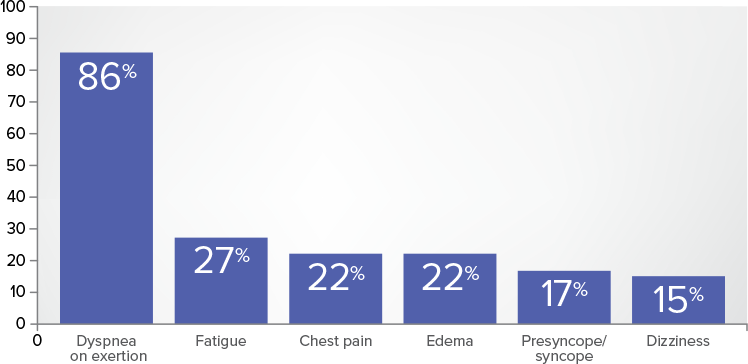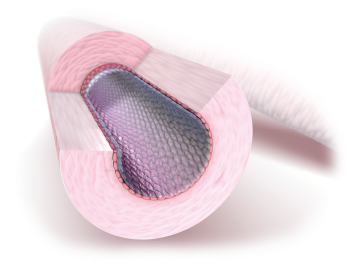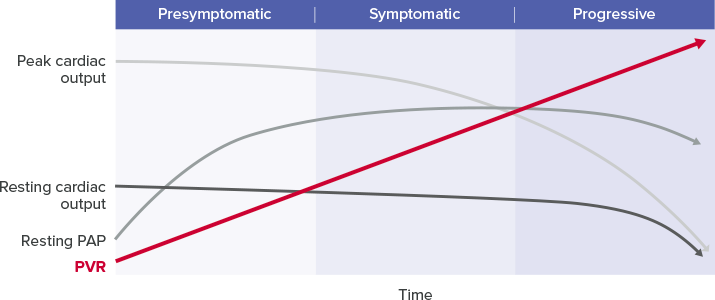PAH Is a Rare, Serious, and Progressive Disease1
- PAH results from restricted flow through the pulmonary arteries, leading to increased PVR2
- Increased pulmonary vascular resistance (PVR) leads to a decline in RV function and eventual RV failure2
Hemodynamic definitions of PH and PAH1
The definitions are based on hemodynamic assessment by an RHC

PAH symptoms may present like other lung conditions3,4
- While a majority of patients present with dyspnea on exertion, it is important to distinguish PAH from other cardiac or pulmonary etiologies such as asthma or COPD
Common signs and symptoms of PAH in the REVEAL Registry3*†

*Percentages are
approximations.
PAH is associated with diverse pathologic events
Pulmonary vasoconstriction
The pulmonary arteries contract, and vascular resistance increases.5,6
Right ventricular strain and dysfunction
Chronic elevated pressures lead to right ventricular strain and overload.5,7
Fibrosis
Over time, the vascular intima thickens, further impeding blood flow.7
Hypertrophy
Vascular hypertrophy occurs in the presence of developing lesions and other arterial abnormalities.7,8
In situ thrombosis
Abnormalities in platelet activation and function promote thrombosis and can lead to increased vasoconstriction.8
There are 3 foundational pathways in PAH with specific drug classes1
- PAH involves an imbalance of 3 naturally occurring chemicals found in the body: endothelin, prostacyclin, and nitric oxide, which contribute to changes in the blood vessels1,7
- OPSUMIT® (macitentan) acts on the endothelin pathway1
Nitric Oxide Pathway1,9
- PDE5is, sGCs promote
- Vasodilation
- Anti-proliferation
Endothelin Pathway1,10
- ERAs prevent
- Vasoconstriction
- Cellular-proliferation

Prostacyclin Pathway1,9,11
- Prostacyclin pathway agents promote
- Vasodilation
- Anti-proliferation
- Anti-inflammation
- Anti-thrombosis
PVR is caused by narrowing of the pulmonary arteries2
Increased PVR leads to a decline in RV function and eventual RV failure.2
Hemodynamic changes correlate with increasing severity of PAH5

Diagnosing PAH
VIEW ALGORITHMSERAPHIN pivotal trial
VIEW RESULTSCOPD=chronic obstructive pulmonary disease; ERA=endothelin receptor antagonist; ERS=European Respiratory Society; ESC=European Society of Cardiology; mPAP=mean pulmonary arterial pressure; PAH=pulmonary arterial hypertension; PAP=pulmonary arterial pressure; PAWP=pulmonary arterial wedge pressure; PDE5i=phosphodiesterase type 5 inhibitor; PH=pulmonary hypertension; PVR=pulmonary vascular resistance; REVEAL=Registry to Evaluate Early and Long-term PAH Disease Management; sGCs=soluble guanylate cyclase stimulator; WU=Wood units.



